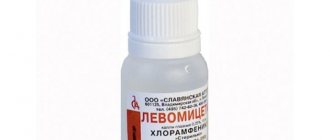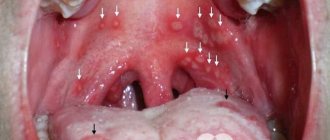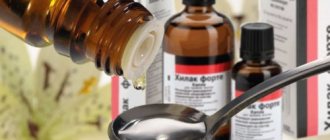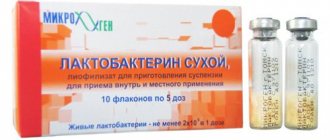Among medications, antibiotics occupy a special place. Most of them are classified as widely used. Their action is due to factors that trigger the body’s internal mechanisms to fight viruses and bacteria. Almost all infectious diseases today are treated with antibiotics. Their list is constantly growing. It will take a little effort and time to figure out which modern antibiotics should be used in treatment. You can study the list - new generation broad-spectrum antibiotics.
Antibiotics: new generation drugs
Antibiotics have an antibacterial effect on the body, which affects vital processes in the body at the cellular level. The selected antibiotic selectively affects the cells of pathogenic microorganisms. Moreover, the degree of impact varies. In some cases, the drug acts on the bacterial cell membrane, inhibiting synthesis without affecting the cells. In others, protein synthesis in the cells themselves is suppressed due to the effects of antibiotics. Drugs such as cephalosporins and penicillin spectrum agents can interfere with the synthesis of the outer membrane of the bacterial cell. Antibiotics from the tetracycline group will help completely suppress protein synthesis at the cellular level.
The main list of broad-spectrum drugs is divided into antibacterial groups. The degree of activity of these drugs against pathogenic bacteria is taken into account, which in turn may also differ in the strength of their effect and speed of spread. Antibiotics are developed taking into account many factors, so the coverage of their effects may also vary. Generally, antibiotics are used when:
- narrowly targeted drugs do not give the desired effect;
- superinfection was determined (different types of bacteria were identified);
- it is necessary to carry out prophylaxis after surgery;
- clinical symptoms (empirical diseases) occur.
Popular inexpensive antibiotics
The list, which includes the cheapest antibacterial drugs, is quite extensive. The table of cheap analogues of antibiotics is as follows.
- Penicillins: Flemoxin Solutab (250-450 rub.) - analogue (Amoxil (50-70 rub.), Ospamox (70-120 rub.))
- Inhibitor-protected aminopenicillins: Flemoklav Solutab (320-350 rub.) – (Amoxil (50-70 rub.))
- Cephalosporins: Emsef (190-210 rub.) – (Ceftriaxone (15-25 rub.), Oframax (70-80 rub.))
- Macrolides: Sumamed (400-440 rub.), Fromilid (730-765 rub.) – (Ormax (140-160 rub.), Azithromycin (70 rub.), Clarithromycin (140 rub.))
- Tetracyclines: Doxybene (100-120 rub.) – (Doxycycline (20 rub.))
- Fluoroquinolones: Tsiprinol (220-255 rub.) – (Ciprofloxacin (30 rub.), Tsiprolet (90-115 rub.))
- Nitroimidazoles: Trichopolum (180-200 rub.) – (Metronidazole (60-70 rub.))
Each of these categories has its own purpose and range of application. Penicillins are used to treat bronchitis, pneumonia, sinusitis, cystitis, and ulcers. Antibiotics from the group of inhibitor-protected aminopenicillins are also used for the same purposes.
Antibacterial drugs from the macrolide category are most effective for infectious diseases of the respiratory tract and ENT organs. Tetracyclines and nitroimidazoles are used to treat various bacterial infections of the genitals in men and women.
What do we know about antibiotics
Antibiotics with a wide spectrum of action, also called new generation drugs, are a universal treatment. With the help of these drugs you can treat otitis media, relieve inflammation, combat the consequences of viral infections, kill germs and various pathogenic microorganisms. At the same time, most importantly, such products have a gentle effect on the human body, causing minimal damage to it.
What are antibiotics
Antibiotics are a broad group of medicines designed to fight infections and the diseases caused by those infections. Most often, broad-spectrum antibiotics are called macrolides. Many broad-spectrum drugs in tablets are sold in pharmacies without a prescription. Moreover, most of them are cheap. The names of drugs with this spectrum of action often come from the main component of this drug. Macrolides in tablets are as effective in their use as ointment or any other antibiotic drug. Nowadays, the list of medications has changed slightly. Broad-spectrum antibiotics have become more popular. Scientists have recently discovered all the possible effects of broad-spectrum antibiotics, and they are already used to treat many diseases that were previously considered incurable. Most often, such drugs are in tablet form.
Experts use the antibacterial properties of antibiotics because the processes in the body's cells differ from those of a bacterial cell. Such treatments act selectively and affect only those cells that have any abnormalities. Before you start treating anything with antibiotics, you need to undergo an examination and pass the necessary tests.
New Generation
New generation antibiotics are used to treat infectious diseases, and this can reduce the number of deaths. With the help of antibiotics, the healing process is accelerated and the course of the disease is alleviated.
One part of the drugs inhibits the synthesis of the outer membrane of bacterial cells. These include cephalosporins and penicillin. The other part almost completely suppresses protein synthesis in bacterial cells. These include macrolides and the tetracycline series of antibiotics. Among them is an ointment containing tetracycline. The name speaks about the composition of this ointment. The list of antibiotics is divided based on how antibacterial the drug is. The instructions must indicate the area where the drug is active. Some drugs have a broad spectrum of action, showing activity against many bacteria, while others have a narrow focus that will be directed at a specific group of microbes. In a situation where the disease progresses too quickly, or the nature of the infection is not clear, a drug with a broad effect is used. Many names often confuse a person, because from all the variety it is necessary to choose the appropriate drug.
New generation broad-spectrum antibiotics: list
The list of drugs with universal properties includes a very large number of drugs, both expensive and quite affordable for many. Most often, penicillin-based drugs are prescribed from this list, as well as macrolides and cephalosporins. They are produced in the form of tablets or solutions. New generation drugs have improved pharmacological properties. Let's name the main ones of these drugs:
- Tetracycline,
- Bilmicin,
- Ampicillin,
- Levofloxacin,
- Moxifloxacin,
- Peropenem,
- Ertapenem,
- Chloramphenicol,
- Streptomycin.
Before use, you should study the instructions and pay attention to the dosage for adults and children, as well as contraindications.
Exposure to broad spectrum antibiotics
Broad-spectrum antibiotics of the new generation, a list of which can be found on medical websites, are the names of antibacterial drugs that can explain little to non-specialists. Before undertaking treatment, you need to study information about how this drug acts on the body and how it manifests itself. Therefore, you cannot select such medications on your own. It is important to follow the recommendations of a specialist.
There is a difference in the action of antibiotics. Thus, the drugs affect gram-positive and gram-negative bacteria. What does it mean?
- Gram-positive bacteria contribute to the development of infectious diseases that cause complications in the nasopharynx and respiratory system.
- Gram-negative bacteria are not so common, but they can affect the diuretic system and peristalsis.
The universal feature of widely used antibiotics is that the doctor can prescribe them even if the causative agent of the disease is not fully identified. In this case, the doctor refers to the clinical picture of the disease.
When a “double strike” tactic is necessary: the use of ABSS
There are many situations where broad-spectrum antibiotics are simply irreplaceable. When is this treatment especially indicated?
- if the symptoms do not make it possible to make an accurate diagnosis, and it is impossible to delay treatment (waiting for the causative bacteria to be identified), as this can lead to an exacerbation of a serious illness or death of the patient. An example is meningitis. With this disease, the patient’s condition deteriorates so quickly that only the appointment of ABSS can save him;
- when it is necessary to destroy bacteria that are resistant to other drugs and antibiotics;
- if the disease is caused by superinfection. Taking several antibiotics, each of which selectively affects a specific type of microorganism, is a less rational method of treatment than using a single ABSS.
ABSS are powerless against viruses, their target is bacteria, so antibiotics are never prescribed for the flu. Not only will they be useless, but they will also create additional stress on the gastrointestinal tract.
Antibiotics from the macrolide group
General purpose drugs from this group are used for:
- tonsillitis,
- otitis in acute form,
- bronchitis,
- whooping cough
- pneumonia.
Macrolides act slowly and gradually. They stop the impact of bacteria and prevent pathogenic microorganisms from multiplying. However, after some time, these microorganisms develop resistance to antibiotics and need to be changed. One of the most common drugs in this group is Azithromycin. This is a fairly stable macrolide. Therapy can last up to five days. But you need to remember about the kidneys and liver.
Brief description of cheap antibiotics
- Ampicillin - the average cost is no more than 50 rubles. Available in the form of a solution for intravenous, intramuscular injection, as well as tablets for oral administration.
This drug is taken for tonsillitis, infectious diseases of the genitourinary system, as well as various colds. Ampicillin is strictly not recommended for use during pregnancy, breastfeeding, or in the presence of renal or liver failure.
- Penicillin - the cost of an antibacterial drug ranges from 5 to 20 rubles per bottle. This drug is administered into the body exclusively intravenously or intramuscularly, and for this reason it is quite difficult to use for treatment at home.
Today, penicillin is most often used in the inpatient treatment of bacterial diseases; in home treatment, this medication is taken extremely rarely.
- Bicillin is a bactericidal drug that is available in the form of a solution for the preparation of intravenous and intramuscular injections and is a derivative of penicillin. The main indications for use are colds, tonsillitis, pneumonia. Can be used to treat both adults and children.
Cefazolin, a cheap and effective drug, has the same effect. The only disadvantage of Cefazolin is that it is produced only in the form of a powder for the preparation of injections, and therefore is used for treatment only in a hospital setting.
Due to the fact that today the number of pathogenic microorganisms with high resistance to penicillin has increased significantly, bicillin is used extremely rarely in modern medicine. The cost of the drug is 10 rubles for 1 bottle of 10 mg.
Contraindications for use:
- Hypersensitivity to the active components of the drug.
- The period of pregnancy and breastfeeding.
- Renal and hepatic dysfunction.
- Children's age is less than 1 month.
Amoxicillin is one of the most popular and effective antibiotics, belonging to an affordable price category. It is characterized by a high degree of bioavailability and belongs to the category of semisynthetic antibiotics. Available in the pharmacological form of tablets and powder for intravenous and intramuscular injections.
The main indications for the use of Amoxicillin are otitis media, tonsillitis, and colds of bacterial origin. The drug is strictly not recommended if the patient is prone to allergic reactions, during all trimesters of pregnancy, as well as during breastfeeding.
- Erythromycin is a bactericidal drug from the macrolide category, used for infectious diseases of the respiratory tract and pneumonia. The pharmacological agent is produced in the form of powder for injection and tablets.
Erythromycin is approved for use in childhood. Contraindications to its use include various liver pathologies, pregnancy and lactation. The cost of the medicine is 55-65 rubles.
- Ceftriaxone is a third generation cephalosporin. Most often used for lung abscesses, pneumonia, bronchitis. The antibacterial agent is strictly not recommended for use in case of colitis, renal or liver failure, or diseases of the gastrointestinal tract. The antibiotic is prescribed with extreme caution during pregnancy and breastfeeding.
The average price of Ceftriaxone is 20-50 rubles.
Antibacterial products for children
This is a separate group of widely used drugs. When using medications as prescribed by a doctor, the three-day principle is taken into account. If during this time the drug does not help, then it is replaced with another one. This means that it turned out to be ineffective in this case. The doctor simply changes the treatment strategy. The list of medicines for children includes:
- drugs based on ampicillin (used for complex treatment of otitis, inflammation, pharyngitis);
- Sumamed Forte (used for minor pneumonia, skin infections);
- Flemoxin Solutab (used to treat children with gastrointestinal disorders and infections);
- Zinat (used from three months for chronic rhinitis, pharyngitis, tonsillitis and bronchitis);
- Augmentin (indicated for inflammatory processes).
Treatment of children is carried out taking into account the dosage according to the child’s weight. Antibiotics for children with a wide spectrum of effects are used only as prescribed by a doctor.
Antibiotics for external use
There are antibacterial drugs that are used externally for preventive purposes. The medicine is applied to the skin and eliminates the inflammatory process, affecting skin regeneration. These are various gels and ointments for children and adults. They can also be used only after consultation with a specialist. Ointments are used during therapy for:
- infectious diseases;
- bacterial complications;
- ulcers, boils, acne;
- trophic formations, bedsores, various skin lesions.
Antibacterial ointments have a universal spectrum of action, influencing directly the infectious agent. The exposure time of the external drug is from 8 to 9 hours. Moreover, you need to use the ointment two to three times a day. List of antibiotics for external use:
- Tetracycline ointment,
- Levosin,
- Baneocin,
- Oflocaine,
- Levomekol,
- Gentaxan.
It is also important to study in advance information about possible contraindications for use.
Broad-spectrum antibiotics of the new generation (the list is given above) are included in the group of drugs obtained based on the results of the latest research. The list of these drugs is constantly changing and expanding. The changes concern drugs that eliminate the causative agent of a particular disease. For certain cases (serious infections), narrow-purpose drugs are used, in others - a wider spectrum. The doctor determines whether the use of antibiotics is justified and how they affect normal microflora.
LiveInternetLiveInternet
Antibiotics are substances that inhibit the growth of living cells or lead to their death. May be of natural or semi-synthetic origin. Used to treat infectious diseases caused by the growth of bacteria and harmful microorganisms.
Universal
Broad-spectrum antibiotics - list:
- Penicillins.
- Tetracyclines.
- Erythromycin.
- Quinolones.
- Metronidazole.
- Vancomycin.
- Imipenem.
- Aminoglycoside.
- Levomycetin (chloramphenicol).
- Neomycin.
- Monomycin.
- Rifamcin.
- Cephalosporins.
- Kanamycin.
- Streptomycin.
- Ampicillin.
- Azithromycin.
These drugs are used in cases where it is impossible to accurately determine the causative agent of the infection. Their advantage is a large list of microorganisms that are sensitive to the active substance. But there is also a drawback: in addition to pathogenic bacteria, broad-spectrum antibiotics contribute to suppression of the immune system and disruption of normal intestinal microflora.
List of strong new generation antibiotics with a wide spectrum of action:
- Cefaclor.
- Cefamandole.
- Unidox Solutab.
- Cefuroxime.
- Rulid.
- Amoxiclav.
- Cefroxitin.
- Lincomycin.
- Cefoperazone.
- Ceftazidime.
- Cefotaxime.
- Latamoxef.
- Cefixime.
- Cefpodoxime.
- Spiramycin.
- Rovamycin.
- Clarithromycin.
- Roxithromycin.
- Klacid.
- Sumamed.
- Fuzidin.
- Avelox.
- Moxifloxacin.
- Ciprofloxacin.
Antibiotics of the new generation are notable for their deeper degree of purification of the active substance. Thanks to this, the drugs have much less toxicity compared to earlier analogues and cause less harm to the body as a whole.
Narrowly targeted:
Bronchitis
The list of antibiotics for cough and bronchitis usually does not differ from the list of broad-spectrum drugs. This is explained by the fact that the analysis of sputum takes about seven days, and until the causative agent of the infection is precisely identified, a product with the maximum number of bacteria sensitive to it is needed.
In addition, recent studies show that in many cases the use of antibiotics in the treatment of bronchitis is unjustified. The fact is that the prescription of such drugs is effective if the nature of the disease is bacterial. If the cause of bronchitis is a virus, antibiotics will not have any positive effect.
Commonly used antibiotic drugs for inflammatory processes in the bronchi:
- Ampicillin.
- Amoxicillin.
- Azithromycin.
- Cefuroxime.
- Ceflocor.
- Rovamycin.
- Cefodox.
- Lendatsin.
- Ceftriaxone.
- Macropen.
Angina
List of antibiotics for sore throat:
- Penicillin.
- Amoxicillin.
- Amoxiclav.
- Augmentin.
- Ampiox.
- Phenoxymethylpenicillin.
- Oxacillin.
- Cefradine.
- Cephalexin.
- Erythromycin.
- Spiramycin.
- Clarithromycin.
- Azithromycin.
- Roxithromycin.
- Josamycin.
- Tetracycline.
- Doxycycline.
- Lidaprim.
- Biseptol.
- Bioparox.
- Inhalipt.
- Grammidin.
The listed antibiotics are effective against sore throats caused by bacteria, most often bethemolytic streptococci. As for the disease caused by fungal microorganisms, the list is as follows:
- Nystatin.
- Levorin.
- Ketoconazole.
Colds and flu (ARI, ARVI)
Antibiotics for the common cold are not included in the list of necessary medications, given the fairly high toxicity of antibiotics and possible side effects. Treatment with antiviral and anti-inflammatory drugs, as well as restoratives, is recommended. In any case, it is necessary to consult a therapist.
Sinusitis
List of antibiotics for sinusitis - in tablets and for injections:
- Zitrolide.
- Macropen.
- Ampicillin.
- Amoxicillin.
- Flemoxin solutab.
- Augmentin.
- Hiconcil.
- Amoxil.
- Gramox.
- Cephalexin.
- Digital
- Sporidex.
- Rovamycin.
- Ampiox.
- Cefotaxime.
- Vertsef.
- Cefazolin.
- Ceftriaxone.
- Duracef.
(c)











